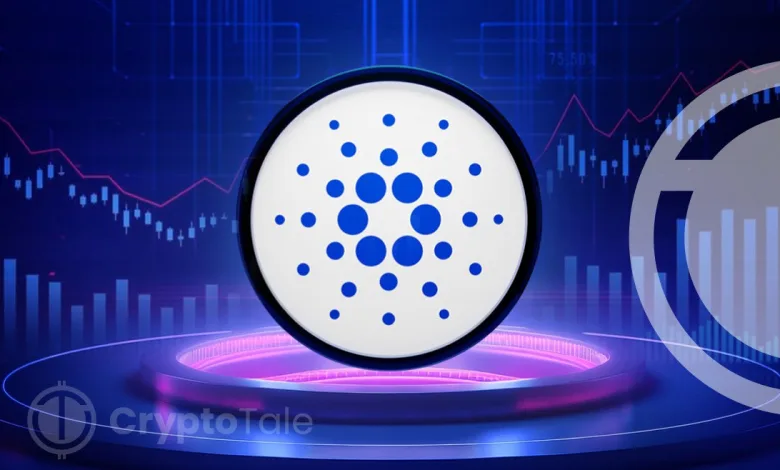A Detailed Review of Cardano (ADA) Ecosystem

Cardano (ADA) is a prominent cryptocurrency platform known for its approach to building its own blockchain. It is one of the well-executed platforms, which is evident in its road map and futuristic approach. This article talks in detail about a review of the Cardano ecosystem.
What is Cardano?
Cardano (ADA) is one of the top 10 cryptocurrencies by market capitalization. It is a platform specifically designed for building smart contracts and creating decentralized applications like Ethereum. There are a lot of similarities between Ethereum and Cardano, such as the PoS consensus mechanism. However, ADA claims to offer a more efficient, flexible, and secure blockchain for running smart contracts.
More than a hundred projects have been launched on the ADA blockchain, and more than a thousand are in the development process. In order to stand out, it makes sure that all technology developed in the platform goes through peer-reviewed research. It means they can be challenged before they are committed, ensuring there aren’t any major issues, and this allows for the stability and resilience of the blockchain.
History of Cardano
In 2013, Charles Hoskinson met Vitalik Buterin by chance and became one of the initial co-founders of Ethereum. However, their cooperation was short-lived due to their different philosophies, and Hoskinson left Ethereum in June 2014. Shortly after their separation, Hoskinson was approached by Jeremy Wood, a former colleague from the Ethereum Foundation. Later, they both started a venture called IOHK, which specializes in building blockchain and cryptocurrencies for governments, corporations, and others.
They started developing Cardano (ADA) in 2015 and launched the blockchain in 2017. The coin ADA is named after the famous Ada Lovelace, who was a 19th-century mathematician and was recognized as the first computer programmer. During the initial coin offering (ICO), ADA raised $62 million, making it focus the attention and underscoring investors’ trust in them. Furthermore, in order to ensure the decentralization of the public blockchain, a non-profit foundation called Cardano Foundation was established to oversee the development of Cardano.
How does Cardano Work?
Cardano was designed to overcome the limitations of existing blockchains, such as the scalability, interoperability, and sustainability of Ethereum and Bitcoin. It was developed with the aim of offering low transaction costs, high transaction speed per second (TPS), and a decentralized network. The Cardano works through,
Layered Architecture
The Cardano blockchain can be divided into two parts to enhance security and scalability.
- Cardano Settlement Layer (CSL): This layer maintains the ledger for accounts and balances and is responsible for verifying whether the transactions are validated by the consensus mechanism.
- Cardano Computation Layer (CCL): This layer executes smart contracts, and computations for applications running on the blockchain are executed. It also allows for the customization of rules for evaluating transactions.
Ouroboros (Proof-of-Stake Consensus Mechanism)
Ouroboros is a Proof of Stake consensus mechanism that Cardano uses to validate transactions and ensure the security and sustainability of the blockchain. Holders of the ADA token can participate in the network by staking their ADA coins. Furthermore, the process of staking involves delegating ADA to the stake pool, which is responsible for validating transactions and creating new blocks.
In the stake pool, a validator node is selected to validate a block of transactions. Validators are chosen based on the number of coins they stake, and the more coins they stake, the more chances they have of being selected to validate a transaction. Once the transaction is validated and added to the blockchain, the validator gets rewards in the form of ADA tokens.
Cardano Hard Fork
One of Cardano’s unique features is its hard fork combinator. This allows Cardano to implement hard forks without worrying about disrupting the network or creating a split. The hard fork combinator combines both old and new protocols into a single ledger, ensuring a smooth transition and being backward compatible. Some of the major Cardano Hard forks include Byron, Shelley, Mary, Alonzo, Vasil, and Voltaire.
Major Phases in Cardano’s Development RoadMap
Each phase of Cardano helped solve one of its major puzzles, helping it evolve into a complete decentralized blockchain with smart contracts, scaling, and governance.
Byron
Byron’s hard fork marked the initial stage of the Cardano blockchain, which focused on building a secure and robust platform. This phase introduced the Cardano Settlement Layer, which facilitated the secure and efficient transfer of ADA while also establishing the basic infrastructure for transaction processing and recording on the blockchain. It was during this phase Daedalus, a full-node desktop wallet, was released, while block production was managed by a set of federated nodes controlled by IOHK, Cardano Foundation, and Emurgo. This approach was necessary to maintain stability and security during the initial stage of the blockchain and also established the groundwork for future decentralization.
Shelley
Shelley is a major turning point in the development of Cardano. During this phase, ADA transitioned from a federated network to a decentralized network where stakeholders could participate in its operation. This allowed ADA holders to earn rewards by staking their coins, contributing to the network’s security. Furthermore, it also allowed users to delegate their tokens to earn rewards. Furthermore, decentralization improved the security of the network by reducing the risk of a single point of attack. Mary Hard Fork also occurred during this phase.
Goguen
Goguen is one of the most important milestones on Cardano’s roadmap. It introduced smart contracts into the blockchain, making it a full-fledged platform with decentralized apps, decentralized finance, and other capabilities. Cardano uses a programming language called Plutus, which allows developers to write smart contracts and execute them on the blockchain. Furthermore, to create, execute, and verify financial contracts, a domain-specific language called Marlowe was introduced. It simplifies the development process for various financial applications on Cardano. Alonzo Hard Fork occurred during this phase.
Basho
This phase focuses on optimizing the scalability and performance of the Cardano blockchain. The network aims to increase its capacity to support a large number of transactions and dApps without compromising security or decentralization. It introduced various techniques, such as sidechains and parallel processing, including Hydra Cardano’s layer 2 solutions. One of the most important events of this phase is the Vasil hard fork. It helped Cardano increase the block size, which allowed it to increase the number of transactions by squeezing more transactions into a single block.
Voltaire
This is the last stage in Cardano’s development roadmap, with each of the above phases solving a part of the puzzle: network in Byron, decentralization in Shelley, smart contracts in Goguen, and scaling in Basho. Voltaire solves the final piece, which is governance. It aims to empower the Cardano community to make decisions about the future development and operation of the network. This phase enables community members to submit Cardano Improvement Proposals, which ADA holders can vote to decide whether to support or deny. It also introduced a treasury system to Cardano. This system allocates a portion of the transaction fees and newly minted ADA to the dedicated treasury fund, which is used to fund the development of the network. Chang will be the first hard fork of this era.
Conclusion
Cardano stands out in the cryptocurrency landscape due to its innovative approach to scalability, security, and sustainability. Its unique hard fork combinator and development roadmap, including phases like Byron, Shelley, Goguen, Basho, and Voltaire, showcases its commitment to improvement and community-driven governance. As Cardano continues to evolve, it stands as a promising platform for dApps and smart contracts, offering substantial potential for future growth and development.





